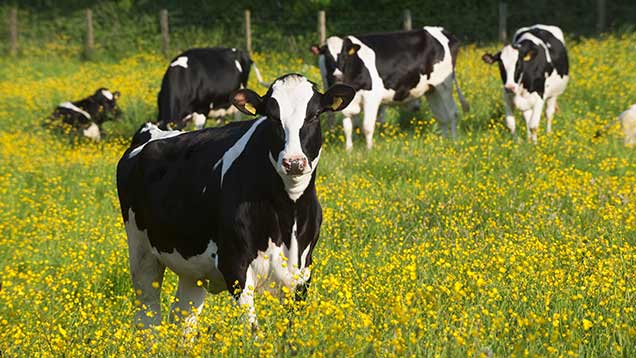Dairy doldrums as market drop hits milk price
 ©Design Pics Inc/Rex Shutterstock
©Design Pics Inc/Rex Shutterstock The dairy market gloom shows little sign of lifting, with European milk production holding up and no big change in demand.
Arla cut the farmgate milk price for its 3,000 British farmers last Friday (22 May), blaming a return to the downward market trend after a brief upturn.
Co-op members will be paid 24.99p/litre in June – 0.84p/litre lower than a month earlier.
See also: Don’t bring back milk quotas, dairy experts say
Changing times at Dairy Crest and Muller
Profits and revenue at Dairy Crest slid significantly in 2014-15.
Total business revenue was down 4% to £1.33bn in the year to 31 March, with pre-tax profit down 59% to £22.1m.
But adjusted profits were down only 7%, after stripping out exceptional costs such as restructuring.
In the dairies division, which is being sold to rival Muller Wiseman, profits dropped 90% to £1.8m. Cheese and spreads performed much better, with profits up 19% to £66.9m.
Britain’s second biggest processor Muller Wiseman is launching into the retail butter market.
Last week the firm revealed it would be using British cream to produce 250g packs of branded and own-label butter for food service and convenience retailers.
Branded packs will carry Muller’s distinctive black and white packaging and the Union Flag.
Since 2013, the company has been making block butter for food processing and manufacturing at its £17m Market Drayton plant.
Industry speculation this week was that other big processors could follow Arla’s drop, with announcements expected close to the end of the month.
DairyCo senior analyst Luke Crossman said rumours of particularly strong production in the EU were not showing up in figures or a further market slide.
But with little extra demand from China and no end to Russia’s import ban in sight, the world milk supply was driving the market, he said.
“Unless there is a weather change or a disease outbreak it is going to be about [low price pressure] back at the farmgate,” he said.
EU milk production in January to March was 1.3% lower than in 2014 – but this was with multimillion-euro superlevy fines looming for many countries.
More recently, UK production in the two weeks ending 16 May averaged 44.2m litres/day, 2.1% higher than the same week in 2014.
This year’s peak was 44.8m litres on 26 April, which was 2.2% up on the previous year’s.
DairyCo said the UK could be on track for another record year, if any unforeseen events or herd changes are avoided.
French milk deliveries in the week ending 10 May were 1.4% down on 2014 but 3.4% up on the five-year average.
Benoit Rouyer, director of economic and regional affairs at the French Dairy Inter-branch Organisation, said markets were showing a “chaotic and bearish” trend.
But he said the end of EU milk quotas had not brought a “dairy tsunami” of surging production in the Continent’s two biggest producers, Germany and France.
“It is difficult to make any price forecasts. In a couple of weeks, as we move further from the peak, the situation will have definitely clarified,” he told the Dairy Industry Newsletter conference in London.
“We are going through a trough during the first half of 2015. But a repeat of 2009 seems unlikely.”
Eric Meyer, president of dairy at US broker HighGround Trading, said dairy product stocks were building across the world, but EU intervention prices would play a role.
“The bottom is getting closer in the New Zealand and EU markets,” he said.
